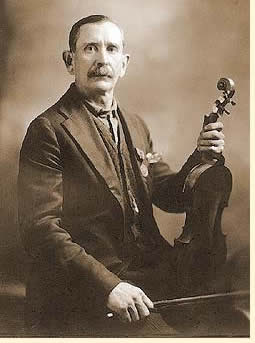“Hey, isn’t that Sally Ann?”
If you detect a remarkable resemblance between today’s installment of the Tune of the Week and “Sally Ann,” then good work, your melodic signature detectors are firing on all cylinders.
These days, the Sally Ann you’re most apt to find in jams is played in the key of D, either as a 2 or 3 part tune (and covered previously in the Tune of the Week).

This particular version of Sally’s sister tune, “Sail Away Ladies,” comes packaged in the key of G, and is based on the version by fiddler “Uncle” Bunt Stephens (and one of the tracks on Harry Smith’s Anthology of Folk Music) . It’s speculated that the melody behind both of these tunes is one of the oldest in existence, so not surprising it has spawned many an offshot along the way.
If you lump it together with all of its melodic cousins, it’s quite possibly the most recorded fiddle tune of all time.
(Incidentally, for those of you looking to polish your ear learning and arrangement skills, taking a tune you already know in one tune and tuning and transposing it to another is a great exercise.)
Sail Away Ladies
gDGBD tuning, Brainjo level 3
Notes on the Tab
Notes in parentheses are “skip” notes. To learn more about these, check out my video lesson on the subject.
For more on reading tabs in general, check out this complete guide to reading banjo tabs.
Level 2 arrangements and video demos for the Tune (and Song!) of the Week tunes are now available as part of the Breakthrough Banjo course. Learn more about it here.
Click here for a current list of all the clawhammer songs and tunes currently available inside of The Vault
View the Brainjo Course Catalog











